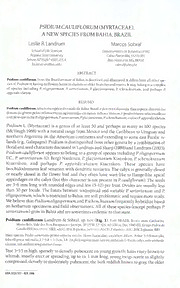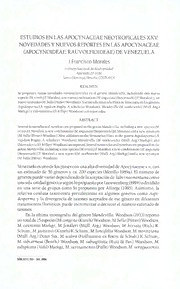
Hahn, S.L. “Hilbert Transforms.” The Transforms and PDF
Preview Hahn, S.L. “Hilbert Transforms.” The Transforms and
Hahn, S.L. “Hilbert Transforms.” The Transforms and Applications Handbook: Second Edition. Ed. Alexander D. Poularikas Boca Raton: CRC Press LLC, 2000 7 Hilbert Transforms Stefan L. Hahn 7.0 Foreword Warsaw University of Technology 7.1 Basic Definitions 7.2 Analytic Functions Aspect of Hilbert Transformations 7.3 Spectral Description of the Hilbert Transformation: One-Sided Spectrum of the Analytic Signal Derivation of Hilbert Transforms Using Hartley Transforms 7.4 Examples of Derivation of Hilbert Transforms 7.5 Definition of the Hilbert Transformation by Using a Distribution 7.6 Hilbert Transforms of Periodic Signals First Method • Second Method • Third Method: Cotangent Hilbert Transformations 7.7 Tables Listing Selected Hilbert Pairs and Properties of Hilbert Transformations 7.8 Linearity, Iteration, Autoconvolution, and Energy Equality Iteration • Autoconvolution and Energy Equality 7.9 Differentiation of Hilbert Pairs 7.10 Differentiation and Multiplication by t: Hilbert Transforms of Hermite Polynomials and Functions 7.11 Integration of Analytic Signals 7.12 Multiplication of Signals with Nonoverlapping Spectra 7.13 Multiplication of Analytic Signals 7.14 Hilbert Transforms of Bessel Functions of the First Kind 7.15 Instantaneous Amplitude, Complex Phase, and Complex Frequency of Analytic Signals Instantaneous Complex Phase and Complex Frequency 7.16 Hilbert Transforms in Modulation Theory Concept of the Modulation Function of a Harmonic Carrier • Generalized Single Side-Band Modulations • CSSB: Compatible Single Side-Band Modulation • Spectrum of the CSSB Signal • CSSB Modulation for Angle Detectors 7.17 Hilbert Transforms in the Theory of Linear Systems: Kramers–Kronig Relations Causality • Physical Realizability of Transfer Functions • Minimum Phase Property • Amplitude-Phase Relations in DLTI Systems • Minimum Phase Property in DLTI Systems • Kramers–Kronig Relations in Linear Macroscopic Continuous Media • Concept of Signal Delay in Hilbertian Sense © 2000 by CRC Press LLC 7.18 Hilbert Transforms in the Theory of Sampling Band-Pass Filtering of the Low-Pass Sampled Signal • Sampling of Band-Pass Signals 7.19 Definition of Electrical Power in Terms of Hilbert Transforms and Analytic Signals Harmonic Waveforms of Voltage and Current • Notion of Complex Power • Generalization of the Notion of Power • Generalization of the Notion of Power for Signals with Finite Average Power 7.20 Discrete Hilbert Transformation Properties of the DFT and DHT Illustrated with Examples 7.21 Hilbert Transformers (Filters) Phase-Splitter Hilbert Transformers • Analog All-Pass Filters • A Simple Method of Design of Hilbert Phase Splitters • Delay, Phase Distortions, and Equalization • Hilbert Transformers with Tapped Delay-Line Filters • Band-Pass Hilbert Transformers • Generation of Hilbert Transforms Using SSB Filtering • Digital Hilbert Transformers • Methods of Design • FIR Hilbert Transformers • Digital Phase Splitters • IIR Hilbert Transformers • Differentiating Hilbert Transformers 7.22 Multidimensional Hilbert Transformations Evenness and Oddness of N-Dimensional Signals • n-D Hilbert Transformations • 2-D Hilbert Transformations • Partial Hilbert Transformations • Spectral Description of n-D Transformations • n-D Hilbert Transforms of Separable Functions • Properties of 2-D Hilbert Transformations • Orthogonality • Stark’s Extension of Bedrosian’s Theorem • Appendix • Two-Dimensional Hilbert Transformers 7.23 Multidimensional Complex Signals Short Historical Review • Definition of the Multidimensional Complex Signal • Conjugate 2-D Complex Signals • Local (or Instantaneous) Amplitudes, Phases, and Complex Frequencies • Relations Between Real and Complex Notations • 2-D Modulation Theory • Appendix 7.0 Foreword The Hilbert transformations are of widespread interest because they are applied in the theoretical descrip- tion of many devices and systems and directly implemented in the form of Hilbert analog or digital filters (transformers). Let us quote some important applications of Hilbert transformations: 1. The complex notation of harmonic signals in the form of Euler’s equation exp(jω t) = cos(ω t) + jsin(ωt) has been used in electrical engineering since the 1890s and nowadays is commonly applied in the theoretical description of various, not only electrical systems. This complex notation had been introduced before Hilbert derived his transformations. However, sin(ωt) is the Hilbert transform of cos(ωt), and the complex signal exp(jωt) is a precursor of a wide class of complex signals called analytic signals. 11 2. The concept of the analytic signal of the form ψ (t) = u(t) + jν(t), where ν (t) is the Hilbert transform of u(t), extends the complex notation to a wide class of signals for which the Fourier transform exists. The notion of the analytic signal is widely used in the theory of signals, circuits, and systems. A device called the Hilbert transformer (or filter), which produces at the output the Hilbert transform of the input signal, finds many applications, especially in modern digital signal processing. 3. The real and imaginary parts of the transmittance of a linear and causal two-port system form a pair of Hilbert transforms. This property finds many applications. © 2000 by CRC Press LLC 4. Recently 2-D and multidimensional Hilbert transformations have been applied to define 2-D and multidimensional complex signals, opening the door for applications in multidimensional signal processing.13 7.1 Basic Definitions The Hilbert transformation of a one-dimensional real signal (function) u(t) is defined by the integral −1 ∞ u(η) 1 ∞ u(η) υ(t) = π P∫−∞ η − t dη = π P∫−∞ t −η dη (7.1.1) and the inverse Hilbert transformation is 1 ∞ υ(η) −1 ∞ υ(η) u(t) = π P∫−∞ η − t dη = π P∫−∞ t −η dη (7.1.2) where P stands for principal value of the integral. For convenience, two conventions of the sequence of variables in the denominator are given; both have been used in studies. The left-hand formulae will be used in this chapter. The following terminology is applied: the algorithm; that is, the right-hand side of Equations (7.1.1) or (7.1.2), is called “transformation,” and the specific result for a given function; that is, the left-hand side of Equations (7.1.1) or (7.1.2), is called the “transform.” The above definitions of Hilbert transformations are conveniently written in the convolution notations 1 υ(t) = u(t)∗ (7.1.3) π t 1 u(t) = υ(t)∗ (7.1.4) π t The integrals in definition (7.1.1) are improper because the integrand goes to infinity for η = t. Therefore, the integral is defined as the Cauchy Principal Value (sign P) of the form −1 −ε A u(η) υ(t) = Alεi⇒m∞0 π ∫− A + ∫ε η − t dη (7.1.5) Using numerical integration in the sense of the Cauchy Principal Value with uniform sampling of the integrand, the origin η = 0 should be positioned exactly at the center of the sampling interval. The limit ε ⇒ 0 is substituted by a given value of the sampling interval and the limit A ⇒ ∞ by a given value of A. The accuracy of the numerical integration increases with smaller sampling intervals and larger values of A. The Hilbert transformation was originally derived by Hilbert in the frame of the theory of analytic functions. The theory of Hilbert transformations is closely related to Fourier transformation of signals of the form ∞ − jω t U (ω) = ∫−∞u(t)e dt ; ω = 2π f (7.1.6) © 2000 by CRC Press LLC The complex function U(ω ) is called the Fourier spectrum or Fourier image of the signal u(t) and the variable f = ω /2π, the Fourier frequency. The inverse Fourier transformation is ∞ jω t u(t) = ∫−∞U (ω)e df (7.1.7) The pair of transforms (7.1.6) and (7.1.7) may be denoted F u(t)⇐⇒U (ω) (7.1.8) called a Fourier pair. Similarly the Hilbert transformations (7.1.1) and (7.1.2) may be denoted H u(t)⇐⇒υ(t) (7.1.9) forming a Hilbert pair of functions. Contrary to other transformations, the Hilbert transformation does not change the domain. For example, the function of a time variable t (or of any other variable x) is transformed to a function of the same variable, while the Fourier transformation changes a function of time into a function of frequency. The Fourier transform (see also Chapter 2) of the kernel of the Hilbert transformation, that is, Θ(t) = 1/(π t) (see Equations [7.1.3] and [7.1.4]) is 1 F Θ(t) = ⇐⇒− j sgn(ω) (7.1.10) π t with the signum function (distribution) defined as follows: +1 ω > 0 sgn (ω) = 0 ω = 0 (7.1.11) −1 ω < 0 The multiplication to convolution theorem of the Fourier analysis yields the following spectrum of the Hilbert transform F υ(t)⇐⇒V (ω) = −j sgn(ω)U (ω) (7.1.12) that is, the spectrum of the signal u(t) should be multiplied by the operator –j sgn(ω ) This relation enables the calculation of the Hilbert transform using the inverse Fourier transform of the spectrum defined by Equation (7.1.12); that is, using the following algorithm: F F−1 u(t)⇒U (ω)⇒V (ω) = −j sgn(ω)U ⇒υ(t) (7.1.13) where the symbols F and F–1 denote the Fourier and inverse Fourier transformations respectively. In practice, the algorithms of DFT (Discrete Fourier Transform) or FFT (Fast Fourier Transform) can be applied (see Section 7.20) © 2000 by CRC Press LLC 7.2 Analytic Functions Aspect of Hilbert Transformations The complex signal whose imaginary part is the Hilbert transform of its real part is called the analytic signal. The simplest example is the harmonic complex signal given by Euler’s formula ψ(t) = exp(jωt) = cos(ωt) + j sin(ωt). A more general form of the analytic signal was defined in 1946 by Gabor.11 The term “analytic” is used in the meaning of a complex function Ψ(z) of a complex variable z = t + jτ , which is defined as follows:39 Consider a plane with rectangular coordinates (t, τ) (called C plane or C “space”) and take a domain D in this plane. If we define a rule connecting to each point in D a complex number ψ, we defined a complex function ψ(z), z ∈ D. This function may be regarded as a complex function of two real variables: ψ (z) = ψ (t , τ ) = u(t , τ ) + jν (t , τ ) (7.2.1) in the domain D ∈ R2 (R2 is Euclidean plane or “space”). The complete derivative of the function ψ(z) has the form ∂ψ ∂ψ dψ = dz + dz * (7.2.2) ∂z ∂z * where z* = t – jτ is the complex conjugate and the partial derivatives are ∂ψ 1 ∂ψ ∂ψ ∂ψ 1 ∂ψ ∂ψ = − j ; = + j (7.2.3) ∂z 2 ∂t ∂τ ∂z * 2 ∂t ∂τ The function ψ (z) = u(t, τ ) + jν (t, τ ) is called the analytic function in the domain D if and only if u(t, τ) and ν (t, τ ) are continuously differentiable. It can be shown that this requirement is satisfied, if ∂ψ /∂z* = 0. This complex equation may be substituted by two real equations: ∂u ∂υ ∂u ∂υ = ; = (7.2.4) ∂t ∂τ ∂τ ∂t called the Cauchy-Riemann equations. These equations should be satisfied if the function ψ (z) is analytic in the domain z ∈ D. For example, the complex function 1 ψ (z) = = u(t, τ ) + jυ(t, τ ) (7.2.5) α − jz is analytic because (α +τ ) t u(t, τ ) = 2 2 ; υ(t, τ ) = 2 2 (7.2.6) (α +τ ) + t (α +τ ) + t and the differentiation ∂u(t, τ ) ∂υ(t, τ ) −2t(α +τ ) = = (7.2.7) 2 ∂t ∂τ 2 2 (α +τ ) + t verifies the Cauchy-Riemann equations. © 2000 by CRC Press LLC It was shown by Cauchy that if z0 is a point inside a closed contour C ∈ D such that ψ (z0) is analytic inside and on C , then (see also Appendix 1) 1 ψ (z) ψ (z0) = 2π j ∫C z − z0 dz (7.2.8) 1 ψ (y + z0) ψ (z0) = 2π j ∫C y dy (7.2.9) This is a contour integral in the (t, jτ) plane. Let us take the contour C in the form shown in Figure 7.2.1. It is a sum of Ct + Cε + CR, where Ct is a line parallel to the t axis shifted by ε , Cε is a half-circle of radius ε and CR a half-circle of radius R. The analytic signal is defined as a complex function of the real variable t given by the formula FIGURE 7.2.1 The integration path defining the analytic signal (7.2.10). ψ (t) = u(t , 0+) + jυ (t , 0+) (7.2.10) obtained by inserting in the Equation (7.2.1) τ = 0+ , where the subscript + indicates that the path Ct approaches the t axis from the upperside. The Equation (7.2.10) is the result of contour integration along the path of Figure 7.2.1 using the limit ε → 0, R → ∞. We have 1 R ψ (z) ψ (z) ψ (z) ψ (t0, 0+ ) = ε→l0i,mR→∞ 2π j P∫−R z − z0 dz + ∫CR z − z0 dz + ∫Cε z − z0 dz (7.2.11) The symbol P denotes the Cauchy Principal Value; that is © 2000 by CRC Press LLC R t0−ε R P = + (7.2.12) ∫−R ∫−R ∫t 0+ε For analytic functions the integral along CR vanishes for R → ∞ and in the limit ε → 0 the integral along the small half-circle Cε equals 0.5 ψ (t0 , 0+) since within the very small circle around t0 the function ψ (z) dz = ψ (t0 , 0+) is a constant and the integral ∫C ε z − z0 = π j. In consequence, the real and imaginary parts of the analytic signal are given by the integrals (a Hilbert pair) −1 ∞ u(η, 0) ν(t) = π P∫−∞ η − t dη (7.2.13) −1 ∞ ν(η, 0) u(t) = π P∫−∞ η − t dη (7.2.14) where the subscripts t0 and 0+ are deleted. The only difference between the above integrals and those defined by Equations (7.1.1) and (7.1.2) consists in notation (deleting zeros in parentheses). Therefore, the real and imaginary parts of the analytic signal ψ (t ) = u(t ) + jν (t ) (7.2.15) form a Hilbert pair of functions. For example, inserting τ = 0 in Equation (7.2.6) yields the Hilbert pair α H t u(t) = 2 2 ⇐⇒υ(t) = 2 2 (7.2.16) α + t α + t The signal u(t) is called the Cauchy signal and ν (t) is its Hilbert transform. A real signal u(t) may be written in terms of analytic signals ψ (t) +ψ *(t) u(t) = (7.2.17) 2 and its Hilbert transform is ψ (t)−ψ *(t) ν(t) = (7.2.18) 2j where ψ *(t) = u(t) – jν (t) is the conjugate analytic signal. For this signal the Equation (7.2.11) takes the form ψ(t) = u(t, 0–) – jv(t, 0–) and the path C is in the lower half of the z plane. Notice, that the above formulae present a generalization of Euler’s formulae jω t − jω t e + e cos(ωt) = (7.2.19) 2 jω t − jω t e − e sin(ωt) = (7.2.20) 2j © 2000 by CRC Press LLC 7.3 Spectral Description of the Hilbert Transformation: One-Sided Spectrum of the Analytic Signal Any real signal u(t) may be decomposed into a sum u(t) = ue(t) + uo(t) (7.3.1) where the even term is defined as u(t) + u(−t) ue(t ) = (7.3.2) 2 and the odd term u(t)− u(−t) uo(t ) = (7.3.3) 2 The decomposition is relative, i.e., changes with the shift of the origin of the coordinate t′ = t – to . In general, the Fourier image of u(t) defined by Equation (7.1.6) is a complex function U(ω ) = URe(ω ) + j UIm(ω ) (7.3.4) where the real part is given by the cosine transform ∞ U Re(ω) = ∫−∞ue(t )cos(ωt)dt (7.3.5) and the imaginary part of the sine transform ∞ U Im (ω) = − ∫−∞uo(t)sin(ωt)dt (7.3.6) The multiplication of the Fourier image by the operator –j sgn(ω ) changes the real part of the spectrum to the imaginary one and vice versa (see Equation [7.1.12]). The spectrum of the Hilbert transform is V(ω ) = VRe(ω ) + j VIm(ω ) (7.3.7) where VRe(ω ) = –j sgn(ω )[jUIm(ω )] = sgn(ω )UIm(ω ) (7.3.8) and VIm(ω ) = –sgn(ω )URe(ω ) (7.3.9) Therefore, the Hilbert transformation changes any even term to an odd term and any odd term to an even term. The Hilbert transforms of harmonic functions are H [cos(ω t)] = sin(ω t) (7.3.10) © 2000 by CRC Press LLC H [sin(ω t)] = –cos(ω t) (7.3.11) H [ejω t] = –j sgn(ω )e jω t = sgn(ω ) e j(ω t–0.5π ) (7.3.12) Therefore, the Hilbert transformation changes any cosine term to a sine term and any sine term to a reversed signed cosine term. Because sin(ωt) = cos(ωt – 0.5π) and –cos(ωt) = sin(ωt – 0.5π), the Hilbert transformation in the time domain corresponds to a phase lag by –0.5π (or –90°) of all harmonic terms of the Fourier image (spectrum). Using the complex notation of the Fourier transform, the multiplication of the spectral function U(ω) by the operator – j sgn(ω) provides a 90° phase lag at all positive frequencies and a 90° phase lead at all negative frequencies. A linear two-port network with a transfer function H(ω) = –j sgn(ω) is called an ideal Hilbert transformer or filter. Such a filter cannot be exactly realized because of constraints imposed by causality (details in Section 7.2.1). The Fourier image of the analytic signal ψ (t) = u(t) + jν (t) (7.3.13) is one-sided. We have H F F u(t)⇐⇒υ(t) u(t)⇐⇒U(ω); υ(t)⇐⇒ j sgn(ω)U(ω) . (7.3.14) Therefore, F ψ (t)⇐⇒U(ω) + j[−jsgn(ω)U (ω)] = [1+ sgn(ω)]U (ω) (7.3.15) where 2 for ω > 0 1+ sgn(ω) = 1 for ω = 0 (7.3.16) 0 for ω < 0 The Fourier image of the analytic signal is doubled at positive frequencies and cancelled at negative frequencies with respect to U(ω). For the conjugate signal ψ *(t) = u(t) – jν (t) the Fourier image is doubled at negative frequencies and cancelled at positive frequencies. Examples 1. Consider the analytic signal e jω 0t = cos(ω0t) + j sin(ω0t). We have H cos(ω0t)⇐⇒sin(ω0t) ; ω0 = 2π f0 F cos(ω0t)⇐⇒ 0.5[δ( f + f0 ) + δ( f − f0 )] F cos(ω0t)⇐⇒ 0.5 j[δ( f + f0 ) – δ( f − f0 e jω0t ⇐F⇒δ( f − f0 ) The spectra are shown in Figure 7.3.1. © 2000 by CRC Press LLC
The list of books you might like

Atomic Habits James Clear

Believe Me

Haunting Adeline

A Thousand Boy Kisses
![Carillon, [Spring 2006] book image](https://cdn.pdfdrive.to/media/content/thumbnails/4a9d8608-f5cb-4569-86da-81adbdb75f38.webp)
Carillon, [Spring 2006]

Un canalla que no lo era
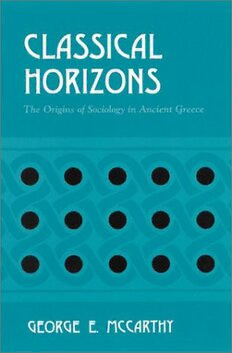
Classical Horizons: The Origins of Sociology in Ancient Greece
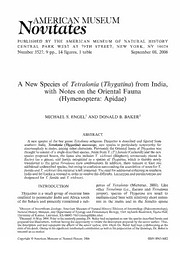
A new species of Tetralonia (Thygatina) from India, with notes on the Oriental fauna (Hymenoptera, Apidae)

The Outsider

The Fantasy Trip. Hexagram

Achtung-Panzer!
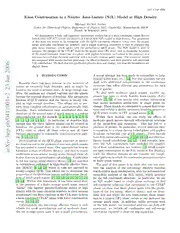
Kaon Condensation in a Nambu--Jona-Lasinio (NJL) Model at High Density
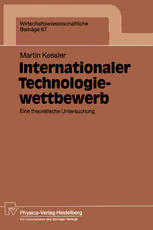
Internationaler Technologiewettbewerb: Eine theoretische Untersuchung

Políticas públicas sobre patrimonio colonial y contexto hispano-indígena en el cono sur americano
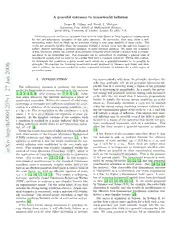
A graceful entrance to braneworld inflation
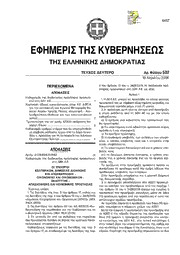
Greek Government Gazette: Part 2, 2006 no. 502
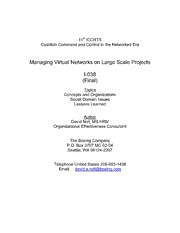
DTIC ADA460479: Managing Virtual Networks on Large-Scale Projects

DTIC ADA460510: Spectral Transformation of Ultrashort Pulses in Photonic-Crystal Fibers. Appendix

DTIC ADA460553: Implementing Purchasing and Supply Chain Management: Best Practices in Market Research
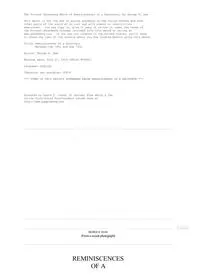
Reminiscences of a Raconteur Between the 40s and the 20s

COLONIALITY, MATE RETENTION, AND NEST-SITE CHARACTERISTICS IN THE SEMIPALMATED SANDPIPER
